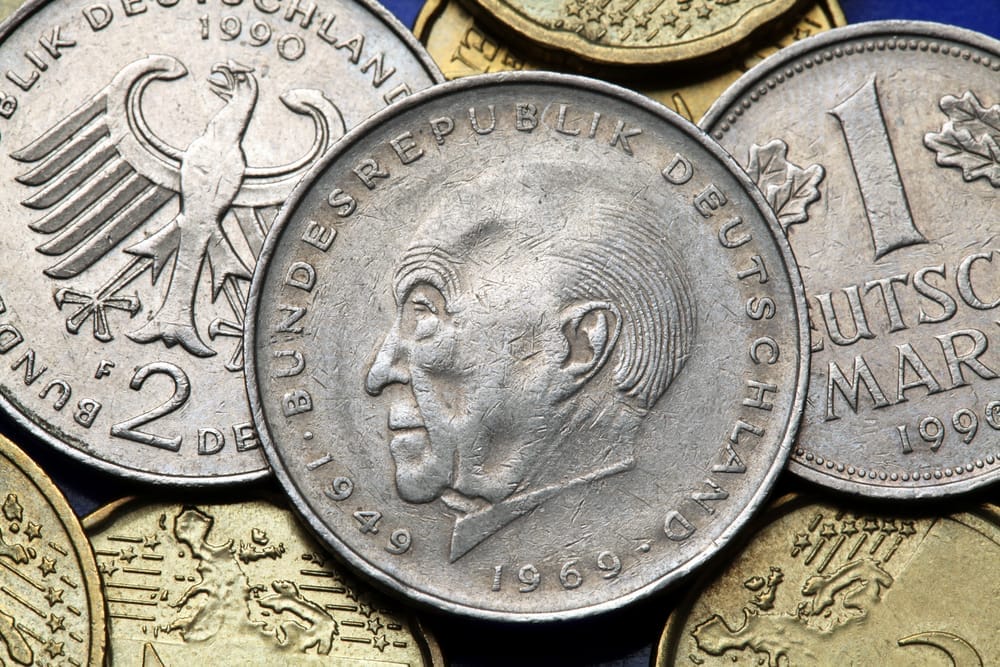Exploring the National Animal of Germany: Eagle Coat of Arms
If you are wondering what is the national animal of Germany? then in this post, I will talk about the National Animal of Germany officially known as the Federal Republic of Germany.
Animals from various species are significant in the symbols and customs of countries worldwide. Among them, the eagle stands out for its deep historical connections.
The golden eagle’s symbolism dates back to its revered status as the emblem of the Roman army during the German confederation. Today, it continues to hold a prominent place on various coat of arms in the Federal Republic of Germany. Let’s explore why the golden eagle has become Germany’s national animal!
What is the significance of the National Animal?

Understanding the role of national symbols
National symbols play a crucial role in representing a country’s identity, values, and history. They are deeply ingrained in the culture and psyche of a nation, serving as a unifying force for its citizens. Symbols like the national animal symbolize strength, freedom, and heritage, reflecting the essence of a nation.
Why is the national animal important in German culture?
In German culture, the national animal holds great importance as it serves as a powerful emblem of national identity. The selection of the eagle as the national animal of Germany symbolizes attributes such as power, courage, and leadership, resonating with the historical and cultural narrative of the country.
How does the national animal reflect the values of a country?
The national animal of a country, such as the eagle in Germany, reflects the values and ideals that the nation holds dear. In the case of Germany, the eagle embodies qualities like strength, unity, and resilience, mirroring the characteristics that the country aspires to uphold.
Why is the Eagle the National Animal of Germany?
Historical background of the choice
The choice of the eagle as the national animal of Germany has deep historical roots dating back to the Holy Roman Empire and the German Confederation. This majestic bird of prey has been associated with power and authority since the times of Charlemagne, becoming a symbol of imperial strength.
Symbolism associated with the golden eagle
The golden eagle, specifically, holds significant symbolism in German culture, representing courage, nobility, and foresight. Its majestic appearance and sharp beak evoke notions of fierceness and protection, qualities that resonate with the German national identity.
Comparison with other national animals around the world
When compared to other national animals globally, such as the lion of England or the kangaroo of Australia, the eagle stands out as a formidable and commanding symbol. Its presence in the coat of arms signifies not only strength but also a soaring spirit of ambition and aspiration.
Exploring the Federal Coat of Arms
Design elements of the German coat of arms
The German coat of arms features the iconic eagle, known as the Federal Eagle, with outstretched wings and a formidable presence. The intricate details of the eagle represent the unity and sovereignty of the German nation, encapsulating the spirit of the country.
Evolution of the coat of arms throughout history
Over centuries, the German coat of arms has evolved, reflecting the changing political landscape of the region. From the Imperial Eagle of the German Empire to the modern Federal Eagle of the Federal Republic of Germany, the emblem has seen various adaptations while maintaining its essence.
Meaning behind the presence of the eagle in the coat of arms
The eagle’s prominent position in the German coat of arms symbolizes authority, protection, and unity. It serves as a visual representation of the ideals and values that the nation upholds, providing a sense of continuity and heritage across different eras.
The Eagle as a National Symbol
Significance of the eagle as a national emblem
The eagle holds significant importance as a national emblem, symbolizing strength, courage, and vision in the context of the German identity. It serves as a unifying symbol that transcends regional differences, embodying the spirit of a unified nation.
Connection between the eagle and the German identity
The deep-rooted connection between the eagle and the German identity dates back to the Weimar Republic and even further to the times of the Holy Roman Empire. The eagle’s presence in various aspects of German society highlights its enduring relevance and symbolic power.
Usage of the eagle symbol in various aspects of German society
The eagle symbol is prominently featured in various aspects of German society, from official government insignia to cultural artifacts. Its widespread usage underscores its significance as a potent symbol of national pride and identity.
The Golden Eagle in German Culture
Mythological references to the golden eagle in German folklore
In German folklore, the golden eagle holds mythological significance and is often depicted as a majestic and revered creature embodying strength and wisdom. Tales and legends featuring the golden eagle showcase its revered status in the cultural landscape.
Artistic representations of the golden eagle in German history
Throughout German history, artistic representations of the golden eagle have adorned artworks, sculptures, and architecture, emphasizing its symbolic importance. The elegant and powerful depiction of the golden eagle reflects its revered status in the artistic heritage of Germany.
Conservation efforts to protect the golden eagle population in Germany
In contemporary times, conservation efforts are underway to protect the golden eagle population in Germany, recognizing the ecological importance of this majestic bird. Initiatives aimed at preserving habitats and raising awareness about the golden eagle’s conservation status highlight the ongoing commitment to safeguarding this iconic species.
FAQ: National Animal of Germany
Q: What is the national animal of Germany?
A: The national animal of Germany is the black eagle which is symbolized on the country’s coat of arms.
Q: Is the black eagle also the national bird of Germany?
A: Yes, the black eagle serves as both the national bird and animal of Germany.
Q: What is the significance of the eagle in German national symbols?
A: The eagle is a prominent symbol in Germany, representing strength, courage, and freedom. It is found on flags, the national coat of arms, and various official emblems.
Q: When did the eagle symbol become associated with Germany?
A: The eagle has been a symbol associated with Germany dating back to the 12th century. It has been featured in various forms throughout German history.
Q: Is the double-headed eagle also used as a symbol in Germany?
A: While the black eagle is the primary symbol of Germany, the double-headed eagle has historical significance and was used in imperial coats of arms in the past.
Q: Who has the authority to regulate the use of national symbols like the eagle in Germany?
A: The Federal Ministry of the Interior in Germany is responsible for overseeing the use and design of federal symbols, including the eagle.
Q: Are there any specific laws or regulations regarding the use of national symbols in Germany?
A: Yes, there are laws in place concerning the federal coat of arms, flag, and other national symbols. These regulations help ensure the appropriate use and representation of these symbols.






